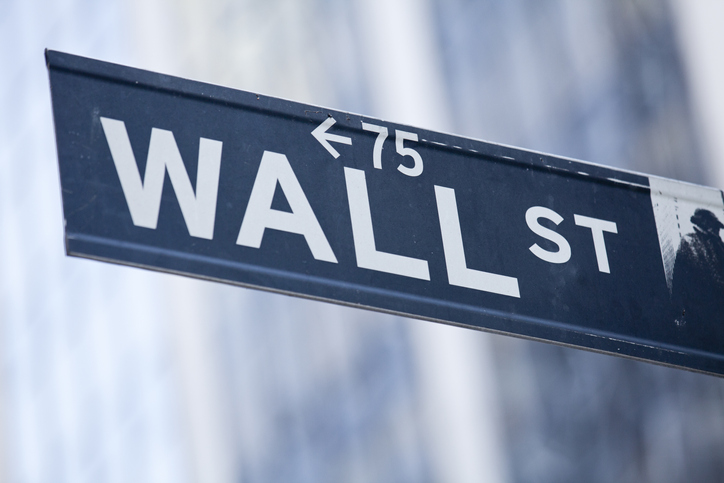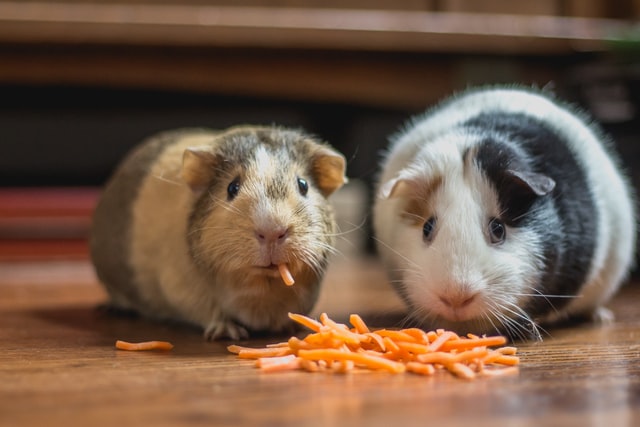Intermittent fasting is all the rage. It got me thinking about how our mindset is geared around how important breakfast is. Or is it?
If you are under 100 years old, you probably think that breakfast is the most important meal of the day. What if I told you that this idea of breakfasts’ importance was merely a marketing revolution launched in 1944 by the General Foods company?
In fact, it all started with Grape Nuts cereal. The GF (“General Foods,” not “gluten-free”) marketing campaign included grocery stores handing out flyers about the importance of breakfasts, coupons for cereal and ads on the radio telling listeners,
Nutrition experts say breakfast is the most important meal of the day. In an era of non-existent fact checkers, this was very big news.
Cereal manufacturers’ big rise to breakfast supremacy started with Dr. John H. and William Kellog, both vegetarian 7-Day Adventists who ran a clean living sanatorium, both of whom believed that eating cereal products would clean your insides, and keep your mind free of lusty desire.
C.W.. Post was a patient at the brothers’ sanitarium where they promoted vegetarianism and accidentally invented corn flakes. C.W. Post started the Postum company with a non caffeinated beverage made of wheat flour, wheat bran and molasses, soon after he left the sanatorium .

Historically speaking, breakfast has not been seen as terribly important. As recently as the mid-1800s, breakfast was focused on animal products, and no particular designated “breakfast foods,” as we have today. It could be eggs or beef or fish, oysters or chicken. In the United States, cereals and grains were equal in the line up to available meats and vegetables. There was no difference between break-the-fast foods and dinner foods.
Today when we think of breakfast, aside from eggs and bacon, we think primarily of grain and sugar based foods: pancakes with syrup, toaster waffles, granola, granola bars, oatmeal, muffins, cereals of all types, and pastries.
Breaking the Fast
As is fairly obvious, breakfast comes from the idea of breaking a fast. Throughout history this has meant different things to different cultures. There were no determinatives as to what time of day or night this should take place.
The Romans thought it was healthier to eat one meal a day. They were geeky about digestion (as were the Greeks). Eating more than one meal was considered gluttonous and harmful. Instead, they enjoyed their meal at midday. (Later in history, this would become a very light lunch followed by dinner before sunset.)
Native Americans ate when food (animal prey and vegetables, fruits, nuts, and occasionally honey) was available, and didn’t eat when food was not. They were used to long periods of fasting, as was true for our ancestors before the Agricultural Revolution ten thousand years ago.
Breakfast as a luxurious meal was invented for wealthy European merchants and royals around the 17th century, when foods from around the world made their way from far off colonized lands and even neighboring countries, as labor traveled across what we now call European borders.

European laborers also ate a “break-the-fast” meal, but only after getting up and out to capture precious work time while the sun was up. This “breaking of the fast” happened closer to midday followed by an early dinner before the sun set. They often didn’t have the time, or means, to eat a third meal.
The Industrial Revolution of the late 18th century created scheduled work times that eventually included much longer hours (by the mid 19th century) with the invention of artificial light.
With this break from traditional circadian rhythm-timed dining, (up early to work in the fields, to bed early as the sun set) – now workers began to eat very early in case they weren’t able to eat until they got home that night. Children attending school during this time were also supposed to eat early in case they couldn’t eat at all until they returned home.
In the 20th century, Kellog’s Corn Flakes and in particular Post Grape Nuts became powerhouse food industries. Postum (the brand and company) had a place on the newly formed Dow Jones Industrial Average in 1928.

The power and money of these food industry leaders nudged and even pushed nutritionists into creating the “breakfast being more important than any other meal” marketing strategy.
On top of high profits through marketing corn and soy for the masses, this was also to serve soldiers fighting in World War II overseas, making sure they had enough basic calories to fight. (This is how the Roman armies were fed mostly wheat because of the need for high calories) This is also how the phrase A “good breakfast of whole-grain cereal and fruit,” became the battle cry of American nutritionists.
As has been said, the truth might be closer to “breakfast is the most marketed meal of the day.”
What About the Current Trend of Intermittent Fasting?
First of all, what IS intermittent fasting? Depending on what book or article you read you may get different answers. In general Intermittent fasting is merely the act of not eating for a certain amount of time during the day and/or night. (This differs from All Day Fasting or Extended Fasting which take place over 24 hours or more).

This is often referred to as Time Restricted Eating. People say they are eating in a 12:12, 16:8, 18:6 or 23:1 window. This means they are only eating within the boundaries of 12 hours, 8 hours, 6 hours or 1 hour.
The other number is how long they are NOT eating. If one were to adopt a 12:12 eating window, one would finish dinner at 7 pm, say, and not eat again until 7 am the next day. A 16:8 might mean starting eating at about 10 am and finishing dinner at 6 pm.
Benefits
There are many proven health benefits to restricting your food intake for a certain amount of time each day. Giving all of your organs time to rest and digest helps your health on a cellular level.
Now stick with me here, I’m about to talk about your organs, your blood and your cells.
When we eat, the pancreas has to shoot out insulin to make sure that blood sugar is kept at a healthy level.
When insulin is present, fat cells are on literal lockdown, not able to release fat into the bloodstream until insulin has subsided. That’s just the bottom line science of it all.
Every time we eat, insulin must be present. Insulin gets in there and shuttles the nutrients and glucose into the cells, especially removing sugar (glucose) from the bloodstream where it is the most toxic.
Try this: think of your favorite kryptonite food. (For me, that’s a chocolate brownie.) See it in your mind’s eye. Imagine eating it.
Hello – your pancreas just shot insulin into your bloodstream, anticipating you eating that figment of imagination!
Blood sugar, which spikes when eating almost anything, is so damaging to your body if it is overabundant that your pancreas will shoot insulin into the blood stream when you even think of eating, just to make sure there’s enough ready and waiting when the comestible is actually consumed.
If you’re eating round the clock, in the disastrous grazing pattern so widely recommended since the early 2000’s, insulin is constantly present in the bloodstream. If Insulin is constantly present in the bloodstream then two things happen:
- A) Your cells stop responding to one of insulin’s major functions, which is to unlock the cell and allow nutrients in. (This is called Insulin Resistance or IR and a major health issue because it’s a precursor to diabetes and all sorts of metabolic disease)
- B) When insulin is present, fat cannot (let me repeat) CANNOT be released into the bloodstream for fuel. Insulin and fat are not enemies, but they do not like to be in the same room at the same time.
Constant grazing keeps your fat hanging out in your fat cells and never released for burning.
If insulin had been able to get the nutrition into the cells and get out of there quickly (having done its job) the fat fuel can begin to be burned, once insulin leaves the bloodstream. Make sense?
It’s a cycle that unfortunately has been exacerbated by quite a few things in modern society. The “grazing method” of eating which has been popular since the 2000s and, frankly, that third meal. These keep insulin high in the blood stream.
Should Women Over 50 Try Intermittent Fasting?
According to Harvard Health, there doesn’t seem to be an age range on intermittent fasting, as long as you are an adult, as long as you’re not underweight and depending on the medications you’re on. (Teenagers and young adults should work with a doctor before starting an intermittent fasting routine.)
Depending on your metabolic health, you may need to gentle into it. If you have medications that you need to have with food, you may have to have a longer eating window. Some blood pressure medication, heart medication or kidney medication create imbalances in potassium and sodium levels, so you may need to take electrolytes, and check with your doctor before starting a fasting routine.
Many women decide to try IF in the simplest way. A 12 hour fast – from the end of dinner to an early breakfast the next day. This is one of the best ways to start.
Once you have that down, it’s fairly easy to begin either eating dinner earlier or push breakfast back for an hour or two to get even more fasting going, which drops insulin and benefits the whole body and stimulating fat loss.
Remember, when insulin is low, fat cells release their fuel for energy. When insulin is present, they stay on lockdown.
Usually people give up breakfast because dinner is still considered a social hour. Our hunger hormone ghrelin is also at its lowest in the morning as well, so often people just aren’t that hungry that in the morning, making it the easiest meal to give up.
Whatever way you approach chilling out the constant eating habit, it’s beneficial, as long as you’re not under-eating calories. A trap that many people struggle with is actually eating so many fewer calories that their metabolism slows down.
Long time intermittent fasters remind us to fast and feast, making sure to eat a normal amount of food based on your Basal Metabolic Rate (BMR) during your eating window. (Here’s a link to a good BMR calculator.)
This makes eating healthy food enjoyable. Intermittent fasting is a healthy tool in the weight loss and metabolic health tool kit.
The easiest way to start is to begin lowering your carbohydrates
AND adding healthy fats (not processed seed oils) for at least couple of weeks to get your body used to burning fat for fuel. This is called low carb, high fat or ketogenic eating.
Eating less often is definitely more doable if your body isn’t crying out to be fed because it burned through all its glucose (the OTHER fuel we use in our body. Fat is the primary fuel that burns clean and long, glucose that we get mostly from carbohydrates – and sometimes protein, is the quick energy fuel which we burn through quite fast).
If you’re interested in learning how to burn your own fat for fuel and implement Intermittent Fasting, click below to connect to me and we can talk about next steps!
Remember: this post is for informational purposes only and may not be the best fit for you and your personal situation. It shall not be construed as medical advice. The information and education provided here is not intended or implied to supplement or replace professional medical treatment, advice, and/or diagnosis. Always check with your own physician or medical professional before trying or implementing any information read here.
